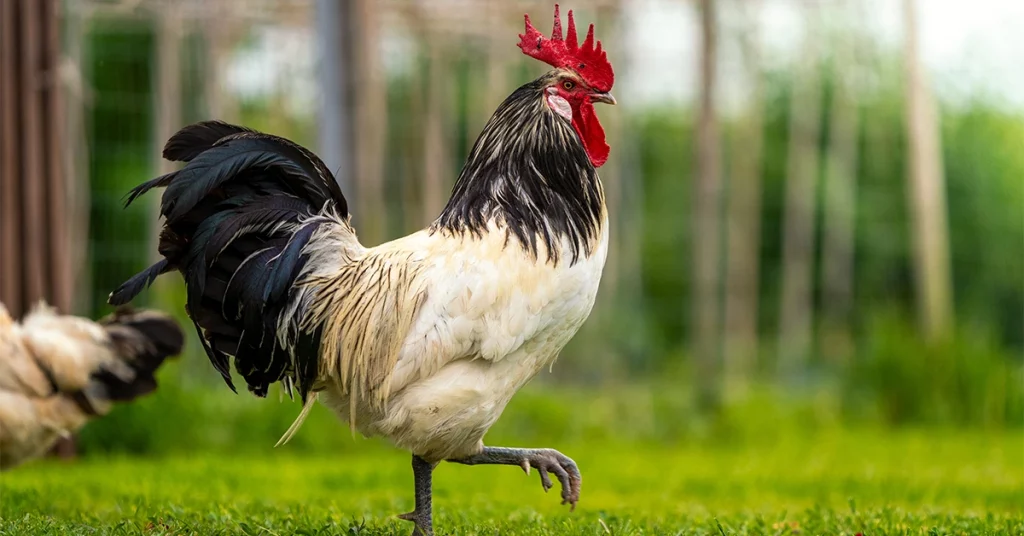Raising chickens and roosters for food is an option that some families by look into. Chickens provide eggs and chicken meat. But, this often leaves a question: can roosters also be used for meat?
In short, rooster meat can be eaten. Unlike chicken meat, rooster meat isn’t usually in stores. It’s tougher than normal poultry with less body fat and requires a longer cook time. However, eating roosters is a common poultry choice in other parts of the world.
Why Eat Rooster Meat?
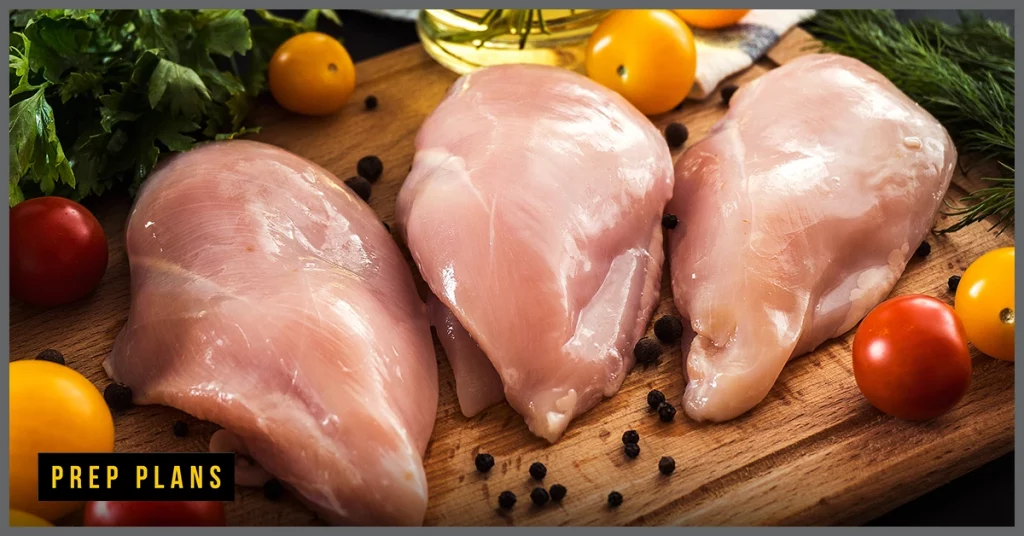
Rooster meat is an option for families and homesteaders that want to get the most out of all their livestock. When you eat roosters, you are using the animal wisely, which is important when you raise female and male chickens.
Normally, male chickens are culled young since they can’t lay eggs. Hens, on the other hand, can both supply eggs and be used for meat. Since hen meat has more bang per buck, hens are considered meat birds, unlike roosters. Plus, poultry meat from hens comes in larger quantities per chicken than male chicken meat.
Rooster Meat Taste & Texture
Rooster meat won’t taste that different unless you eat roosters alongside hens, side-by-side. Male chicken meat will be darker in color and won’t have as much meat on the bone as chicken. However, rooster meat taste is described as more hearty and filling compared to hens.
In some countries, people eat roosters at the same rate they eat female chickens. Many recipes for rooster meat require that the meat is marinated and cooked low and slow. This will make the rooster meat tasteless and dense and instead make it softer on the palate.
Why Raise Chickens For Survival?
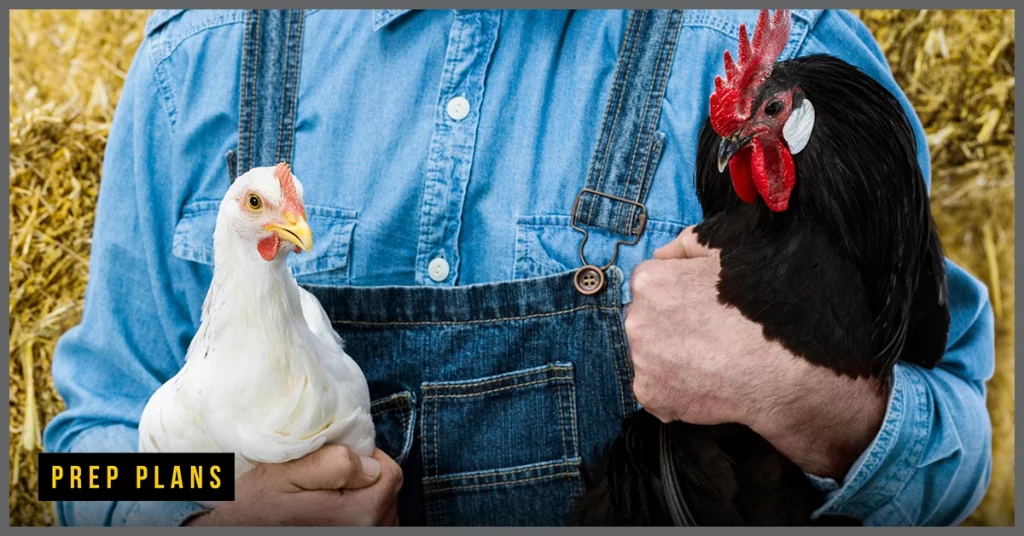
Raising chickens is a great way to maintain a reliable source of protein over a year. Even in winter, female chickens can produce eggs, even if at a slower rate.
If you are looking to keep hens, it’s important to know that roosters are only needed if you are looking to hatch chicks. Otherwise, hens will lay their eggs regardless of if a rooster is there or not.
Female chickens will give two sources of protein (poultry and eggs), while male chickens will only provide protein. Chickens are low-maintenance compared to other livestock such as cows or pigs. They are also easier to feed, require less land, and their coops can be made or bought for cheaper than barns for larger animals.
When raising female and/or male chickens for survival, you must have put time and energy into planning for your livestock.
Even though chickens are on the lower end of needs as compared to goats, pigs, or cows, they still need ample space and housing to make eggs. Along with this, depending on the chicken breeds you own, they may have special requirements, unlike other breeds.
What are the Coop Requirements?
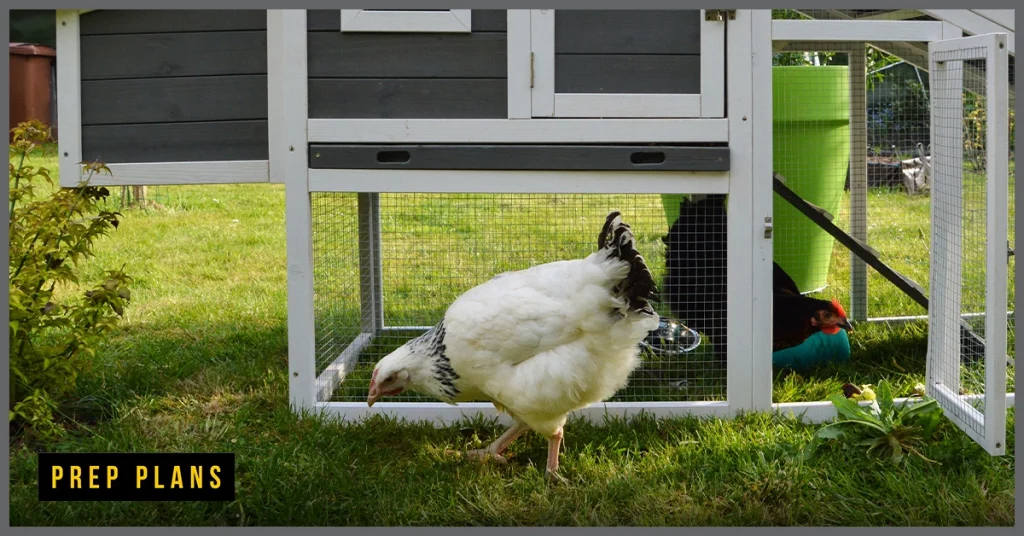
When setting up a coop, it’s important to stick to some requirements to keep your chickens happen all year long.
Local Town Guidelines
Keeping a coop first requires checking with your local town ordinances. Some places may not allow roosters due to crowing or could have limits on the total number of chickens you can own. After checking with the local town’s guidelines, you’ll be able to look into owning chickens.
Spacing & Location
You must have the space for a coop. You want your chickens to be healthy and happy so a good coop must have a roof, a minimum of four walls, feed and water dispensers, one nest box per three hens, and a roosting area. The coop should also be sturdy so wind, weather, and predators can’t make it sway.
Not only does the coop include the physical building, but also the space around it that allows for chickens to walk and run. This area should be fenced in as well so that predators like foxes can’t get in.
On average, female and male chickens will need eight to ten feet outside of the coop and three square feet inside the coop. This means, in total, three chickens will need nine feet inside the coop and at least eight feet outside of the coop.
After you’ve set up and fenced in your coop, you should be ready to own chickens. Generally, it’s recommended that chickens are kept in groups of three to six chickens each since they are social animals.
How Do I Feed and Care For the Roosters and Chickens?
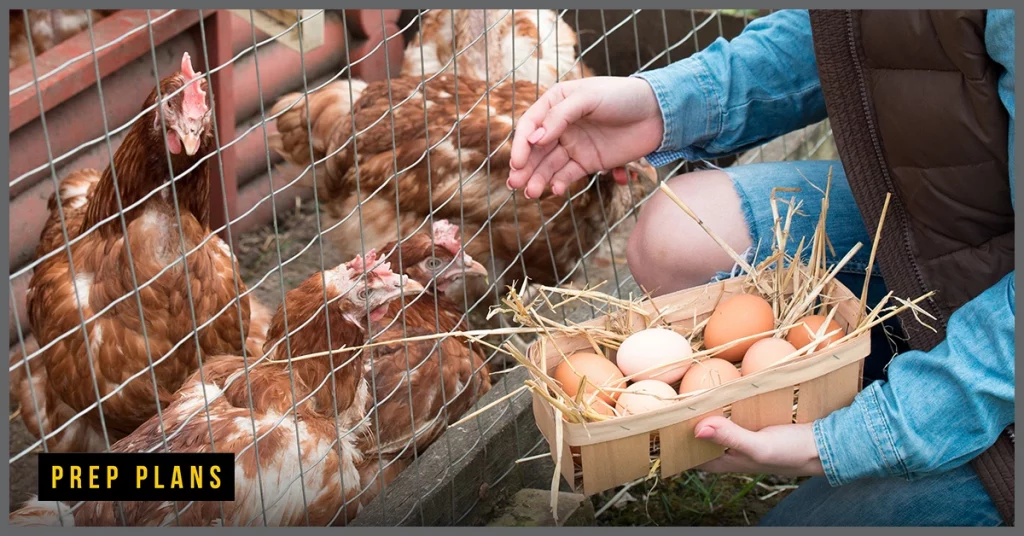
Feed for chickens usually comes in bags of 40 to 50 pounds. Depending on how many chickens you have, and if you have an automated dispenser, the feed can last for a week to a month.
Once you’re able to tell the eating schedule of your chickens, you’ll be able to more accurately guess how much will be needed.
Aside from feed, chickens also eat grubs, larvae, vegetables, and fruit. When chickens are free to roam your land, you’ll find they are great pest control! Additional food such as larvae and vegetables can help keep chickens active and attentive. However, feed will cover the majority of nutrients a chicken needs.
Caring For Chickens In Spring & Summer
During the warmer months, chickens will be between the coop and the coop’s yard. Since hens lay eggs at a higher production during these months, make sure to retrieve the eggs every day. Sometimes, you may have to do one or two check-ins for eggs per day.
Male chickens during the warmer months may be more protective than in the winter. During the summer, male chickens must protect their nests from predators. Because of this, roosters can be more aggressive to keep their flock safe.
Chickens can also be used to clean out gardens. Once the season is over, let your chickens feed on old plants and leftover produce to give them that extra boost before winter.
Caring For Chickens In Autumn & Winter
During the winter months, you’ll need to set up caring for chickens differently than in the spring and summer. To do this, keep the water from freezing and drafting out of the coop. Try to make a dry outdoor space for your chickens and include lights in and out of the coop.
However, never put a heat lamp into your hen house. More often than not, these will cause fires that could destroy your entire coop.
When Will Hens Lay Eggs?
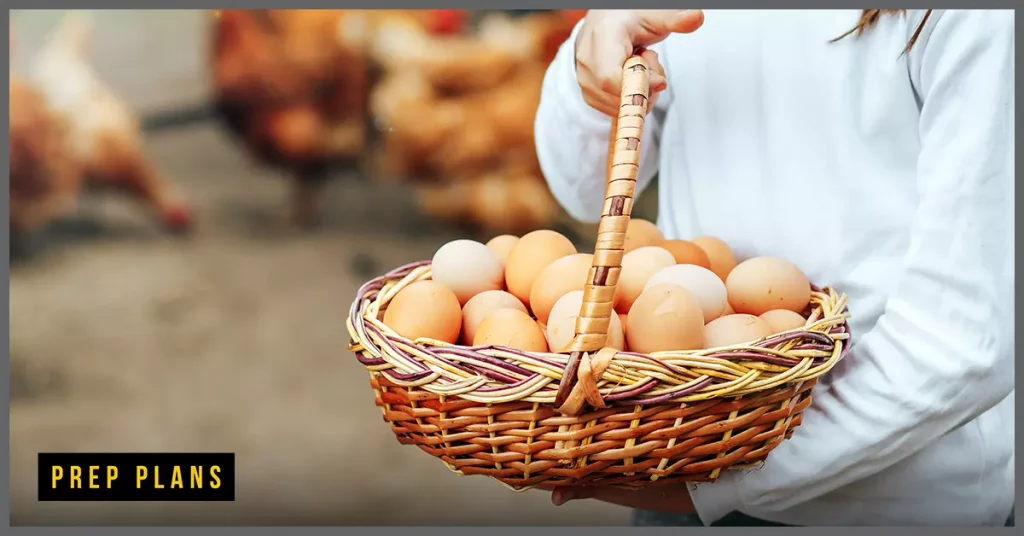
Laying hens’ cycles of egg production will change depending on the season and external stressors.
Spring & Summer
Many chickens will lay two eggs every three days in the warmer months. This brings the weekly total to four to six eggs per chicken.
Depending on your total chickens (three to six following your local guidelines), a group of hens will give you a weekly total of 12 to 36 eggs for the spring and summer.
Autumn & Winter
In the colder months, egg production will slow. While it may seem like your laying hens will never lay multiple eggs, they will, it will just take more time than when it’s hot out.
Usually, it will take three days for one egg in the cooler months. This means that the weekly average is half of what it normally would be, making a total weekly intake of two to three eggs per hen.
In total, a laying hen has about two good years of egg-laying before they begin to slow down. In these two years, you’ll see the most egg production from a hen. After a few years, it’s recommended to look at getting new laying hens.
When opting to get new chickens for the next few years, it’s best to buy a chick rather than hatching your own. When you hatch your eggs, it can be hard to tell if you have male chickens. Once these male chickens grow into roosters, they can be hard to control.
How Do I Cook the Chicken and Rooster Meat?
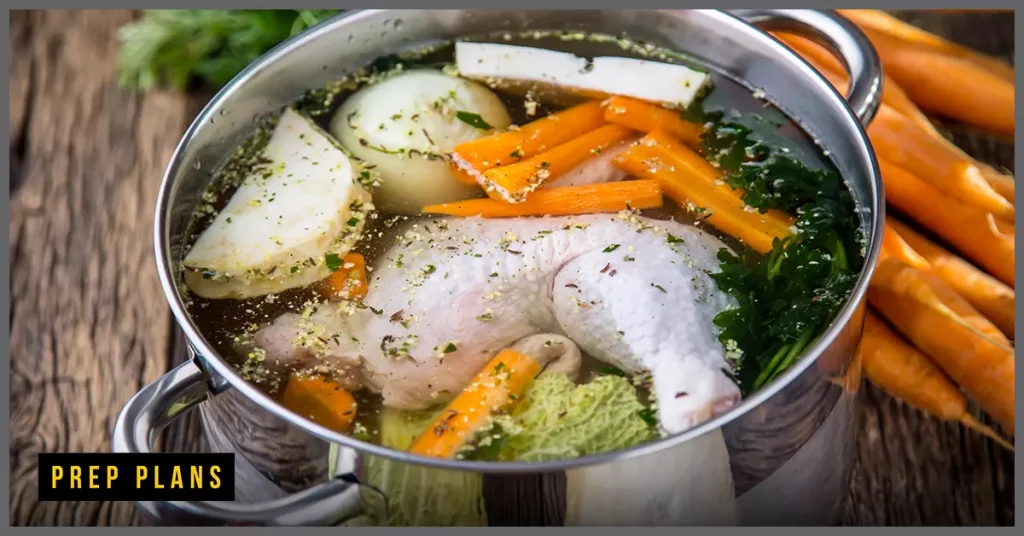
Occasionally, you may butcher and prepare your chicken meat for cooking. After breaking down all of the sections of your poultry, it’s then time to cook your meat.
Remember to always cook your meat fully before eating, as raw chicken product carries illnesses.
Cooking rooster meat is much different than chicken meat. While poultry meat can be cooked in almost every way that other meats can be, rooster meat requires special treatment.
Since rooster meat is tough, it has to be cooked with moist ingredients, such as stock or soup base. Stewing hens and roosters will often create similar results.
It’s also best when cooked low and slow, similar to some styles of beef or pork. Once fully cooked, it’s usually shredded or pieced instead of being presented whole. Like the previously mentioned stewing hens, both are best when cut up and placed in sauces.
Because of this major difference in the cooking style, rooster meat taste is much more hearty. It’s generally served with other elements like rice or potato, making it fuller meat compared to hen meat.
Summary
Male chickens can be food, but their texture and taste may be different than hens.
Regardless of what type of chicken you’ll be owning, you should make sure to have enough space per chicken while sticking to the guidelines of your local community. Make sure to use the proper feed and take precautions as the months turn colder.
Once you’ve successfully cared for your chickens, you’ll reap large quantities of eggs for most of the seasons.

